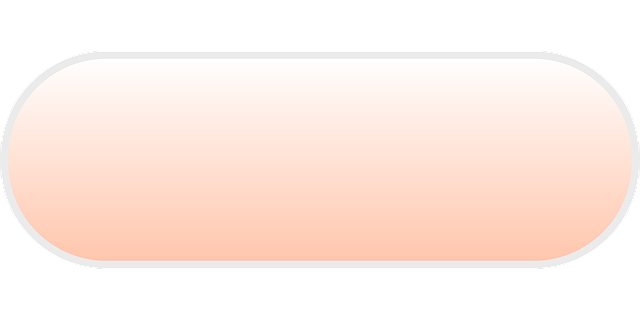UI design transforms complex digital interactions into simple, elegant, and user-friendly experiences by bridging technical capabilities with user needs. It relies on principles like simplicity, user-centricity, and aesthetics to create intuitive interfaces that enhance usability and engagement. Key components include user research, personas, and Information Architecture (IA) for logical content organization. Wireframing and prototyping enable testing and refining layouts, while usability testing optimizes functionality based on user feedback. Ultimately, effective UI design fosters a seamless digital journey, meeting user expectations and driving business success.
“Unleash the power of exceptional user experiences with a deep dive into UI/UX design for websites. In this comprehensive guide, we explore the art and science behind creating visually appealing and user-friendly digital spaces. From understanding the fundamentals of UI design to mastering usability testing, each step is crucial in crafting seamless interactions. Discover key principles, user research techniques, information architecture, and iterative prototyping—all essential elements for designing websites that captivate and engage users. Elevate your web design skills with this essential resource.”
Understanding UI Design: The Visual Language of Websites

UI design, or User Interface Design, is the art and science behind creating visually appealing and intuitive websites. It’s about translating complex digital interactions into a simple, elegant, and user-friendly language that everyone can understand. Think of it as the bridge between a website’s technical capabilities and human users’ needs. A well-designed UI ensures that visitors can seamlessly navigate a site, find what they’re looking for, and enjoy their overall experience without frustration or confusion.
The visual language of websites is a powerful tool to engage and guide users. It involves thoughtful consideration of color schemes, typography, layout, and interactive elements. These design choices collectively create a website’s personality, evoke specific emotions, and ultimately influence user behavior. For instance, a clean and minimalist UI might be suitable for a tech startup aiming for a modern and straightforward image, while a playful and vibrant design could capture the essence of a children’s online platform. Effective UI design respects users’ cognitive load, presents information hierarchically, and uses interactive elements sparingly to enhance usability.
Key Principles of Effective UI/UX Design

Effective UI/UX design for websites is built upon a solid foundation of key principles that enhance user experience and engagement. Firstly, simplicity is paramount; intuitive interfaces with minimal clutter foster ease of use. Each element should serve a purpose, contributing to a seamless flow that guides users towards their desired outcomes. This involves thoughtful layout planning, ensuring content is well-organized and easily navigable.
User-centric design is another cornerstone. By understanding user needs, behaviors, and goals, designers can create interfaces tailored to their target audience. This involves extensive research, user testing, and iterating based on feedback. Ultimately, successful UI/UX design balances aesthetics with functionality, resulting in visually appealing and highly usable digital experiences that capture and retain users’ attention.
User Research and Personas: Creating a Human-Centered Experience

User Research and Personas are fundamental aspects of crafting a human-centered experience in UI design. By understanding the needs, behaviors, and goals of your target audience, designers can create interfaces that resonate deeply with users. This involves gathering qualitative and quantitative data through methods like surveys, interviews, and analytics tracking. This data is then synthesized to create detailed user personas—fictional representations of ideal customers—which serve as stand-ins for the diverse range of users who interact with a website.
Personas guide every design decision, from information architecture to visual styling. They help designers prioritize features, anticipate user challenges, and ensure that the final product meets the needs and expectations of its intended users. This human-centered approach not only enhances usability but also fosters a deeper level of engagement and satisfaction, making the website more successful in achieving its business goals.
Information Architecture: Organizing Content for Seamless Navigation

In UI design, Information Architecture (IA) plays a pivotal role in creating user-friendly websites. It involves structuring and organizing web content in a logical manner, ensuring users can effortlessly navigate through different pages. A well-designed IA breaks down complex information into digestible chunks, allowing visitors to find what they’re looking for quickly. This is achieved by establishing clear hierarchies, categorizing related content, and implementing intuitive labeling.
By following best practices in IA, UI designers enhance the overall user experience (UX). Users appreciate a straightforward, consistent layout that enables them to scan and comprehend information swiftly. For instance, sitemaps, wireframes, and user flows are essential tools used in IA to visualize and optimize website structure before development begins. This proactive approach guarantees that the final product not only looks appealing but also functions seamlessly, catering to users’ needs and expectations.
Wireframing and Prototyping: Building the Foundation of User Interaction

Wireframing and prototyping are crucial steps in the UI/UX design process, serving as the foundation for user interaction and overall website functionality. Wireframes, simple low-fidelity sketches or digital representations, lay out the basic structure of a webpage, focusing on content placement, navigation, and key interactive elements. This stage allows designers to explore different layouts, identify potential usability issues early on, and establish a solid visual language for the project.
Prototyping takes wireframes a step further by introducing interactivity and functionality. Designers create clickable models of the website, enabling them to simulate user behavior and gather feedback from stakeholders and potential users. This iterative process helps refine the user flow, improve navigation, and ensure that the final UI design meets user expectations and business goals, ultimately enhancing the overall user experience.
Usability Testing and Iteration: Refining the User Journey

Usability testing is a vital component of the UI/UX design process, allowing designers to gather valuable insights and ensure the website meets user needs effectively. By observing users interact with the site, designers can identify pain points, understand user preferences, and pinpoint areas for improvement. This iterative feedback loop facilitates continuous refinement of the user journey, enhancing overall usability and satisfaction.
Through this testing, designers can make informed decisions about layout adjustments, content prioritization, and interaction design improvements. Each iteration builds upon the previous one, creating a more intuitive and accessible website that aligns with user expectations. A well-executed usability testing phase is key to developing a seamless UI design, ensuring users can navigate and engage with the site efficiently and enjoyably.
